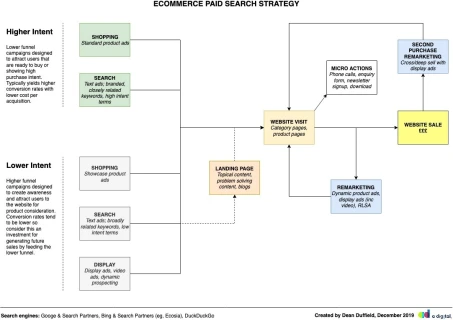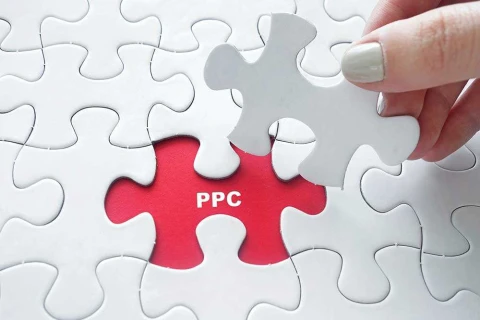Anatomy of an eCommerce Paid Search Strategy
—One of my main responsibilities here at A Digital in Cumbria is to help online retail businesses generate profitable revenue return through paid search and PPC advertising management. Paid search for ecommerce involves being visible in the paid positions on Google, Bing, DuckDuckGo or others, with the aim of driving visitor traffic, customer actions and sales orders on the website.
It's no secret Google dominates in this area, with almost 90% of search engine market share here in the UK. Over the years, Google's advertising features have evolved dramatically, from simple text ads in search results to now offering a full suite of digital advertising options that also include shopping, display and video adverts. With a multitude of effective advertising options, we're able to create campaigns and ads that reaches consumers before, during and after their purchase.
But before we go straight into spending money, I like to map out the campaigns. Here's an example of a paid search advertising plan I created for an ecommerce client, showing how we utlise different ad formats and how they all link together to target people at different stages of their purchase.

High and Low Intent Traffic
The idea is to generate two flows of visitor traffic to the website, attracting both users who are showing high purchase intent and close to making a purchase, as well as users who are earlier in their purchase journey and are looking for more information before possibly placing an order.
Budget is prioritised towards high intent traffic as these users typically have a higher sales conversion rate and therefore generating positive revenue return on the ad spend.
Non-Purchase Remarketing
Those that engage with the website and view products but don't go on to make a purchase will be targeted with a range of display remarketing ads once they leave the website, with the aim of luring them back to complete an order.
We use both responsive display ads and dynamic product ads whereby the products the user has viewed on the website will be collated into a single advert, helping to keep it highly relevant and standing the best chance of the user coming back to place an order.
Second Purchase Remarketing
Those users that go on to place an order will be targeted post-purchase with a range of display ads to try to generate a second-purchase. How long after their purchase really depends on the type of products.
Free Download
If you'd like to use the above flowchart to help with your campaigns, feel free to download the PDF: eCommerce Paid Search Strategy Plan.



